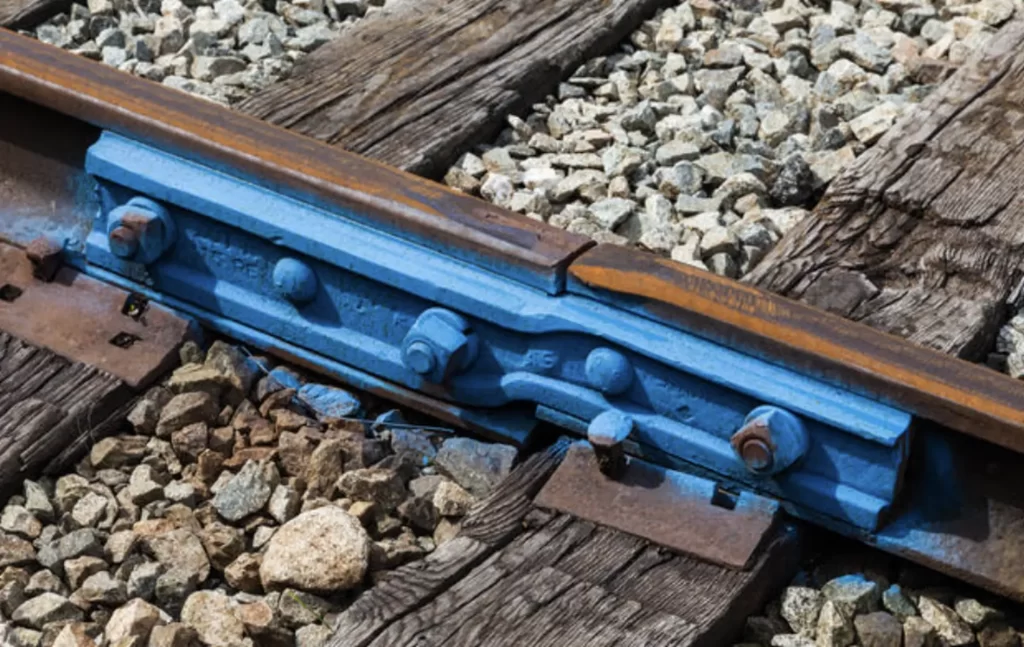Forging manufacturer
Railroad Joint Bars.
Railroad joint bars, also known as splice bars or fishplates, are crucial components in maintaining the integrity and stability of railway tracks. These metal bars are bolted to the ends of two rails to join them together, ensuring a seamless connection and enhancing the track’s overall performance.
✓ Ensure Stability. Enhance Performance.




Common Rail Joint Bar

These are the standard joint bars used to connect two rails of the same size and profile. They are typically used in straight sections of track and are designed to provide a smooth transition between rail sections.
Compromise Rail Joint Bar

Compromise joint bars are used to connect rails of different sizes or profiles. They are essential in situations where older rail sections need to be joined with newer ones or where different rail standards are used on the same track
Transition Joint Bar

Transition joint bars, also known as compromise joint bars, are specialized components used in railroad tracks to connect rails of different sizes or profiles
Benefits of using
StarPath Railroad Joint Bars
Experience unmatched durability and performance with StarPath Railroad Joint Bars, designed to enhance track stability, reduce maintenance needs, and ensure seamless rail connections.

Increased Stability
Our joint bars enhance track stability, ensuring smooth and safe train operations.

Consistent Structural Integrity
Manufactured with precision, our bars maintain structural integrity under dynamic loads.

Reduced Wear and Tear
High-quality materials and manufacturing processes reduce wear and tear on rails, extending their lifespan.
Manufacturing Process of Rail Joint Bars
The manufacturing process is crucial to ensuring the strength, durability, and reliability of rail joint bars. At StarPath Rail, we adhere to stringent quality standards in every step of the process
01
Forging
The raw material is heated to a high temperature and shaped using a hammer or press. This process ensures the joint bar is dense, uniform, and free from defects.
02
Machining
After forging, the joint bar is machined to its final dimensions. This step ensures the correct shape and size and smoothens the surface, removing any imperfections.
03
Heat Treatment
The joint bar undergoes heat treatment to increase its hardness and strength. This involves heating the bar to a high temperature and then cooling it rapidly, enhancing its durability and resistance to wear.
04
Finishing
The final step involves cleaning and polishing the joint bar. Protective coatings may be applied to increase resistance to corrosion and wear, ensuring long-term performance.

forging material
Unrivaled Strength and Durability in Every Railroad Joint Bars
Superior Materials for Exceptional Rail Joint Bar Performance
✓ High-Quality Steel • Durable Cast Iron• Rigorous Material Selection
GLOBAL PRODUCTION CAPABILITIES
Delivering Unmatched Durability with Rapid Production Timelines
24k+ Square Yards
Manufacture Size
10
Years

a step-by-step guide
How to Install Rail Joint Bar
01
Prepare the Rails
Ensure the rail ends are clean, straight, and free from damage or debris. Align and level the ends properly.
02
Position the Joint Bar
Place the joint bar between the two rail ends, aligning the bolt holes.
03
Secure the Bolts
Insert bolts through the holes and tighten them using a wrench. Ensure the joint bar is firmly in place.

ACCESS ADVISORS
Why Choose StarPath Rail?
At StarPath Rail, we are committed to providing high-quality rail joint bars that meet stringent industry standards. Our experienced engineers and advanced manufacturing processes ensure that you receive products that are durable, reliable, and tailored to your specific needs.
Trusted manufacture
Related Products
Rail Clips
Essential components for securing rails to the baseplates, ensuring stability and reducing rail movement.
Rail Anchors
Prevent longitudinal rail movement, maintaining track alignment and reducing maintenance needs.
Rail Pads
Provide a cushioning layer between the rail and baseplate, reducing noise and wear.
Frequently Asked Questions
What are rail joint bars used for?
Rail joint bars are used to join two rail ends together, ensuring stability and seamless connection in railway tracks.
What materials are available for rail joint bars?
Our rail joint bars are available in steel, cast iron, and malleable iron, each offering unique benefits in terms of strength, durability, and ease of installation.
What are types of Rail Joint Bars?
Compromise Joint Bars
Compromise joint bars are designed to join two different rail sizes, making them ideal for rail upgrades. They ensure proper alignment and minimize the impact on the rails, providing a smooth transition between different rail sections.
Bolt Hole Joint Bars
Bolt hole joint bars are used in areas that require frequent maintenance. These bars feature pre-drilled bolt holes, making installation and removal quick and efficient. They are particularly useful in high-traffic areas where maintenance is regularly needed.
Insulated Joint Bars
Insulated joint bars are essential for tracks that require electrical signalling. These bars prevent electrical currents from passing between joined rails, maintaining the integrity of the signalling system and ensuring safe railway operations.
